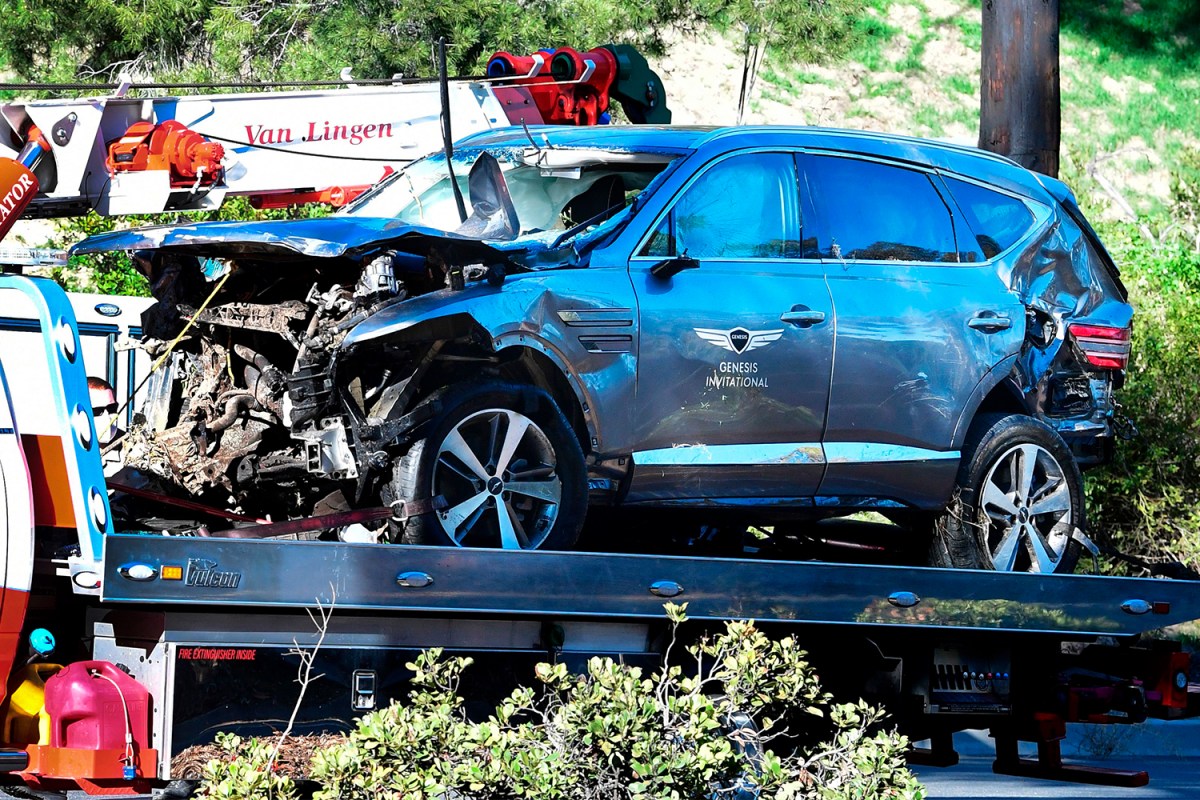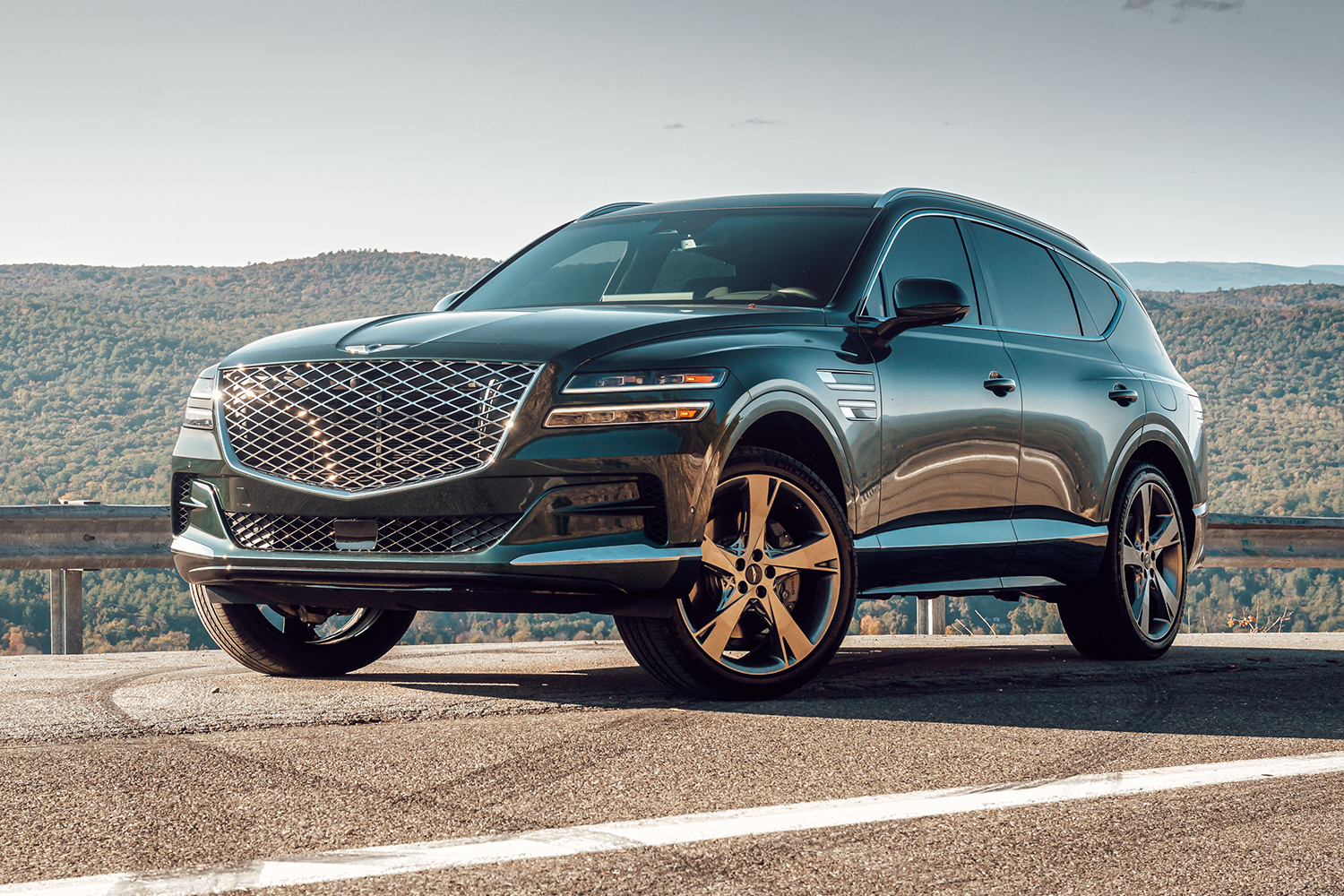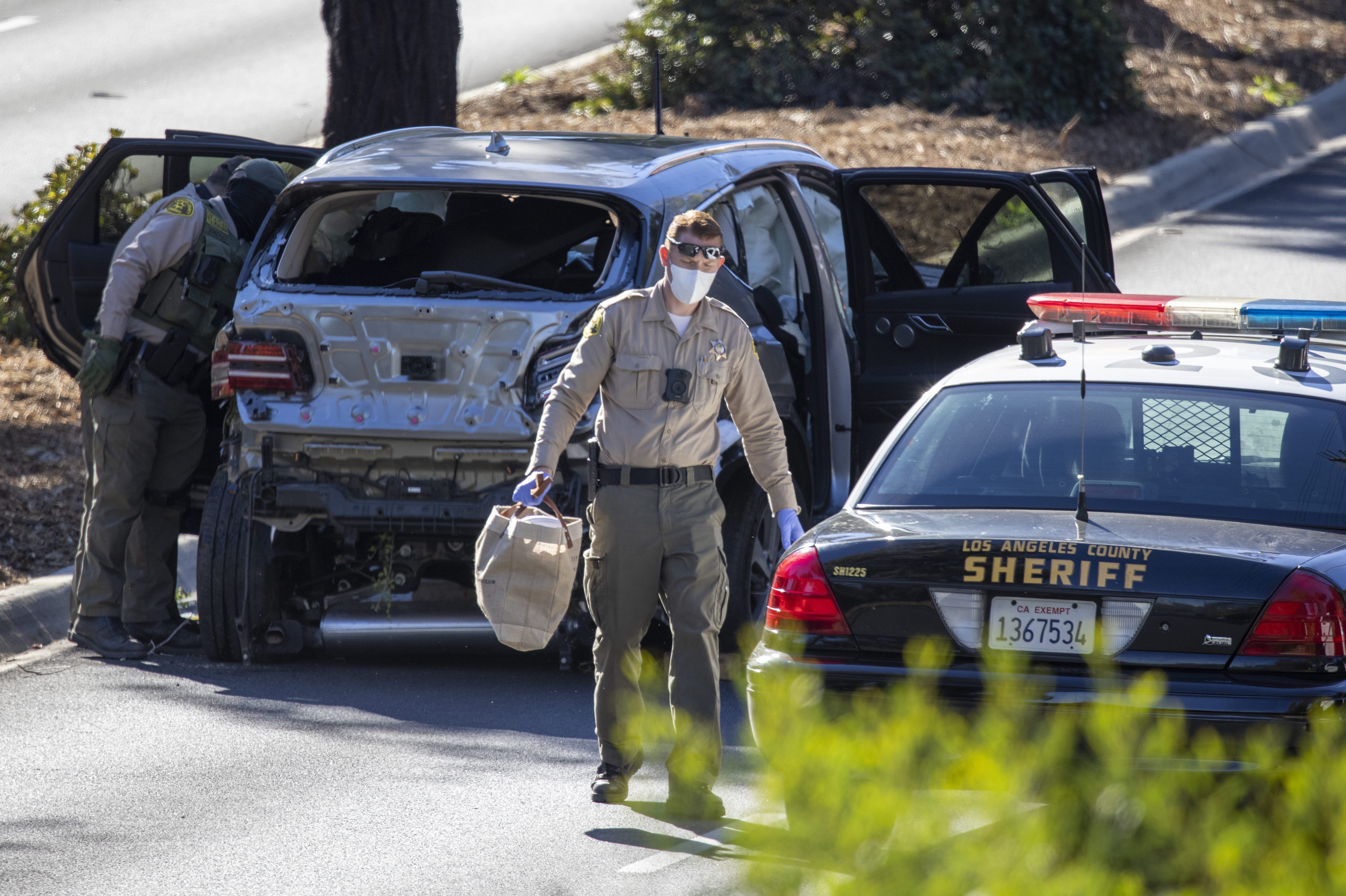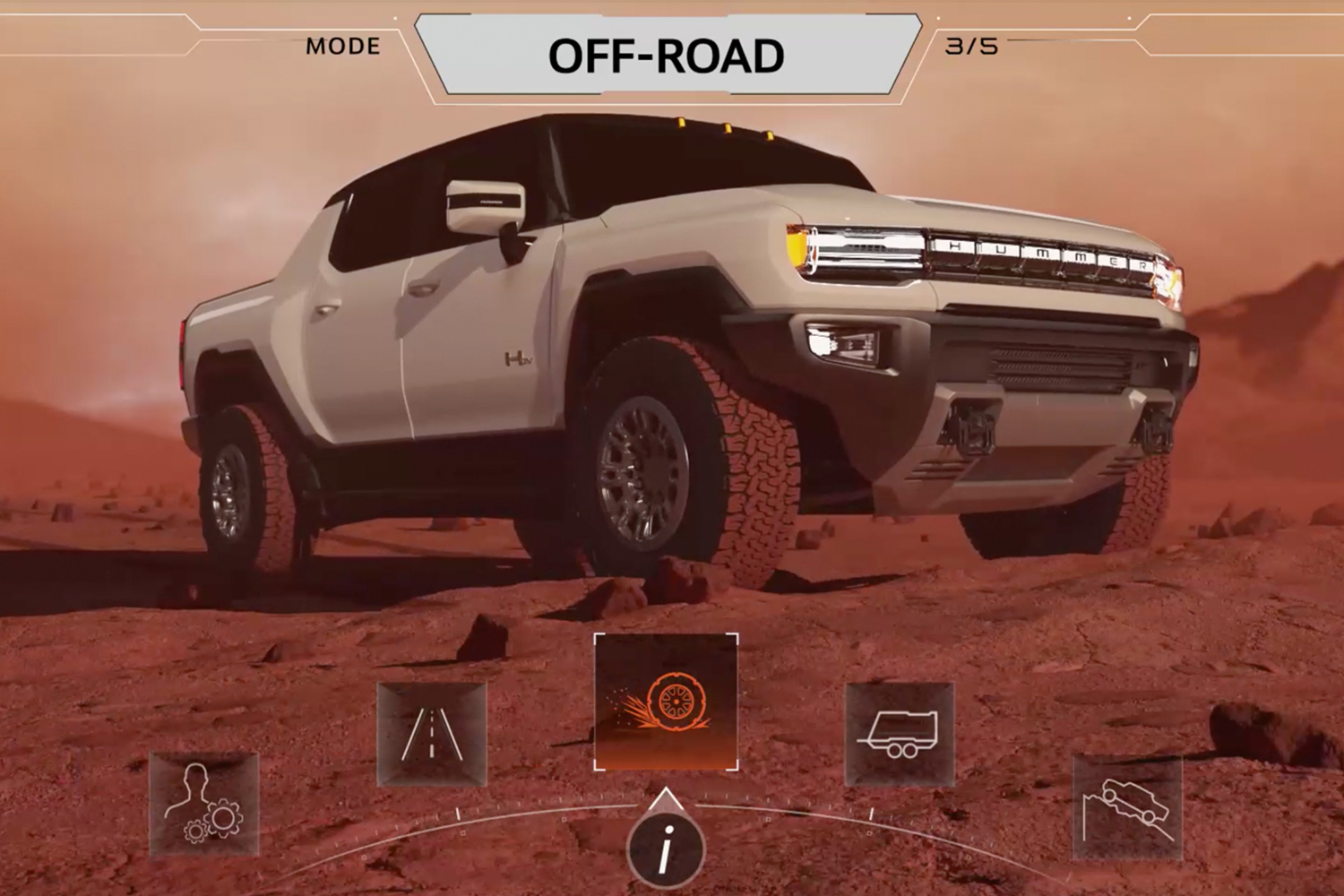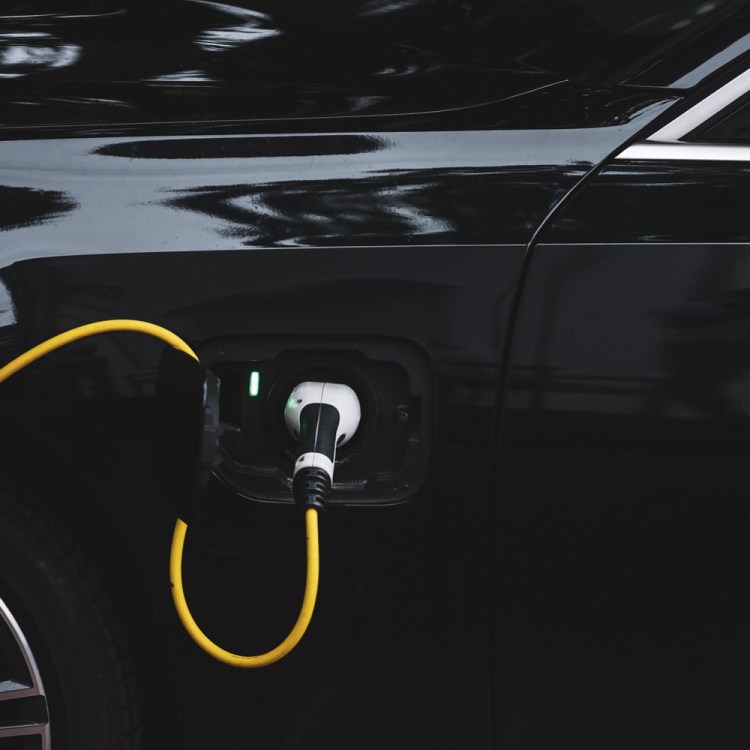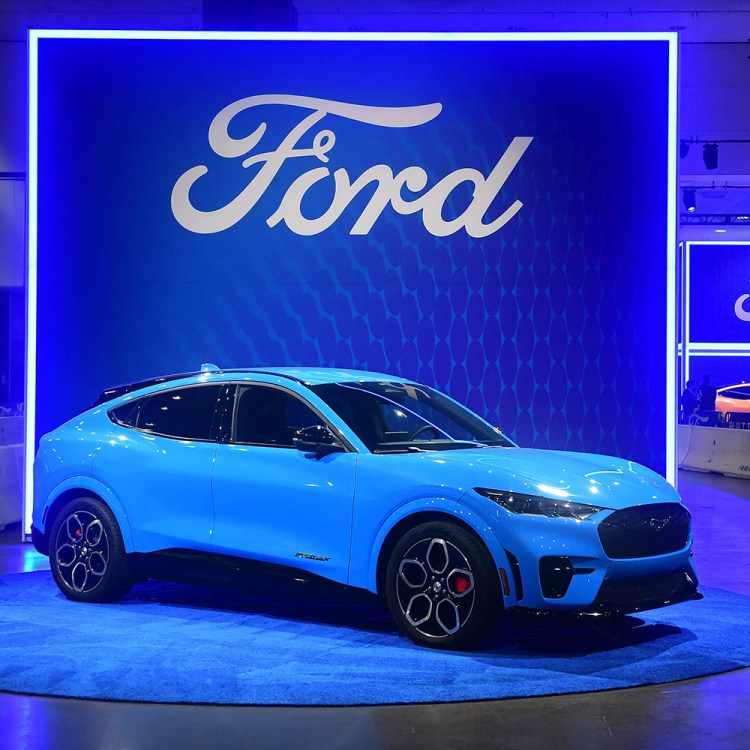Every year, the Insurance Institute for Highway Safety puts their stamp of approval on a list of cars they deem the safest on the market. For their 2021 edition, released in February, the nonprofit research organization doled out accolades to 90 vehicles, up from 64 the year before. IIHS President David Harkey said automakers really “stepped up to meet the challenge.”
One company they singled out was Hyundai Motor Group, which includes the Hyundai, Kia and Genesis brands, and which garnered the most awards overall. But the praise didn’t stop there; the next month, IIHS gave its highest honor — known as the Top Safety Pick+ award — to yet another vehicle in the family: the 2021 Genesis GV80, which achieved the highest possible rating in six crashworthiness tests, including roof strength.
Except by that time, much of the public already knew the safety prowess of the Genesis GV80, if indirectly, as the luxury SUV was the one Tiger Woods was driving when he crashed in February. According to information released last week, the 45-year-old golf star was driving 84 to 87 mph in a 45 mph zone, hit a sign, crossed a center divider, hit a tree and went “airborne” as his vehicle careened off the road. Despite the severity of the crash, Woods survived. It begs the question: Does he have modern vehicle safety standards to thank?
How Much Safer Are Cars Today?
“It’s absolutely the case that people are surviving crashes in modern cars that they would not have survived in cars of 20 or 30 years ago,” David Zuby, executive vice president and chief research officer at IIHS, tells InsideHook. “It’s hard to say whether or not those improvements contributed directly to Tiger Woods surviving, but the outcome of his crash is definitely representative of how vehicles have improved.”
Over the last thirty years, IIHS data has shown a significant drop in the rate of driver deaths, which the organization calculates using data from the National Highway Traffic Safety Administration and other outlets. As Zuby notes, in model year 1989, IIHS calculated 138 deaths per million registered vehicle years, whereas 2019 saw just 35 deaths per million, roughly a quarter of the figure from 30 years before.
What does Zuby attribute that precipitous decline to? There are the obvious answers, like airbags, which became mandatory for automakers in the late ‘90s, and seatbelts, which became mandatory in the late ‘60s, and which more people have started to wear over the years, a trend Zuby ascribes to laws requiring passengers to buckle up (though not all states require all adult passengers to wear them). In the case of Woods, he was reportedly wearing his seatbelt at the time of the accident. The airbags also deployed. Zuby cites electronic stability control, stronger roofs and better protection in side crashes (like side airbags) as other notable safety upgrades.
What Makes the Genesis GV80 SUV Safe?
The GV80, however, is not only equipped with airbags in front of both the driver and front passenger; it features a whopping 10 airbags, including one between the driver and front passenger, as well as side curtain airbags, which, in tandem with the one in front, “worked well together to keep the head from coming close to any stiff structure or outside objects that could cause injury,” as noted by IIHS after its own crash tests of the SUV.
In video of the tests, which IIHS published to YouTube in March, the entire driver airbag apparatus can be seen clearly from the outside and inside of the vehicle. Additionally, the ability of this specific vehicle to absorb the damage in the exterior body, while leaving the interior relatively intact, is mirrored in the institute’s test and images from Woods’s crash.
As we noted in our recent review of the GV80, the first SUV from the luxury brand, this particular Genesis model is “big and confident, a schooner in a sea of sailboats.” That heft — which can be seen in spades on American roads as drivers have been making the move from sedans to SUVs for years — also counts towards the vehicle’s safety score.
“SUVs have an advantage in crash protection, and that is the fact that they are bigger and heavier,” says Zuby. He clarifies that this hasn’t always been the case, as older SUVs weren’t subject to the same safety regulations as cars. “But over time,” he says, “it now is the case that SUVs … are offering their occupants better protection than cars.”
Does that mean everyone should immediately swap out their sedan for an SUV (or specifically a Genesis)? Not necessarily.
“I think there are things other than personal protection in a crash that figure into people’s calculation about which new vehicle to buy,” says Zuby. One gigantic reason: Climate change-causing cars emissions, which SUVs have been driving for years. And anyway, it’s not just oversized luxury haulers that have become exponentially safer over the last few decades — it’s cars and trucks, too.
Whether you’re looking to get into shape, or just get out of a funk, The Charge has got you covered. Sign up for our new wellness newsletter today.
